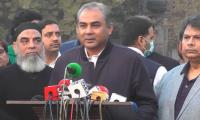“Why are there so many cars?!” I find myself asking this question almost every day on my way home from work; being stuck in what feels more like a traffic riot than a jam leaves lots of time to ponder. With the expressway recently expanding from three lanes to five, it feels like the number of cars on it has also increased five-fold.
While the network of roads is continuously expanding in urban Pakistan, it seems to be having little impact on the ebbing of traffic – underpasses and overhead bridges galore but so does the pulsating throng of cars that makes its presence known through blaring horns and enraged drivers.
According to the Pakistan Bureau of Statistics, the total number of traffic accidents reached 10,429 in 2020-21, a 16 per cent increase from 2012-13. This resulted in 4,721 fatal accidents, with 5,816 people getting killed. There were 15,351 vehicles involved in these accidents, which is a staggering 55 per cent increase from 2012.
With a labour force of approximately 72 million in 2021, it is not unfounded that there will be more people on the road compared to a decade ago; a middle class striving more than ever for social mobility, a higher percentage of fresh graduates entering the job market, and increased rural to urban migration are plausible explanations for more movement on the roads.
But should the increase in commuters lead to just as much of an increase in the number of vehicles on the road? Is this not where the public transport system should step in to facilitate inter-city travel?
While the statistics shed light on the concerning increase in the number of vehicles on the road, it is essential to delve deeper into the factors contributing to this trend. One crucial aspect is the strong allure of personal vehicles, which signifies convenience, independence, and a sense of upward mobility.
The Pakistan Economic Survey for 2022-23 shows that approximately 25.1 million motorcycles and 4.1 million cars were registered in Pakistan in 2021. Comparing these to the 5.8 million motorcycles and 1.9 million cars registered in 2011 shows an increase of more than 100 per cent for both categories, and illustrates a major part of the problem.
To add insult to injury, the import of motorcycles and cars has also increased by 110 per cent and 129 per cent respectively, from 2011 to 2021. The number of registered buses has only increased by a miniscule 27 per cent over the past 10 years.
Sure, it can be argued that private means of transport are a necessity in this day and age, and that public transport facilities like the Orange Line train, Metro and Green Line, or initiatives like EzBike, have been introduced in recent years to combat this problem. However, how many executives or wanna-be executives have we seen using these services? Why is it that public transport in Pakistan is largely used only by those who cannot afford any other means of commute, rather than being a deliberate choice for most?
Many would rather use over-charging ride-hailing services than take a bus from point A to point B. The perception that public transport limits social mobility or decreases one’s status is a mindset driven by capitalistic notions and needs to be checked for the sake of the country’s road infrastructure, if nothing else.
That being said, it is also important to acknowledge that the path to the development of public transport is a two-way road. People cannot be expected to forgo the comfort and dependability of cars and motorcycles for buses and vans that are not always on time, have deteriorating conditions, limited facilities and short routes.
In an ideal world, public transport should be the go-to means of inter-city travel rather than the last resort. However, to bring about that change, the same kind of attention, innovation and competition need to be dedicated towards public transport that are currently seen in the realm of ride-hailing services.
Private and public institutions would have to join hands to not just provide improved services, but also inform of their importance in a manner that compels individuals to park their cars at home and choose to take the bus for their daily commute.
Without a reliable and attractive alternative to private vehicles, individuals are less likely to make the shift to public transport. This dilemma underscores the necessity of an integrated strategy that addresses both the allure of private transportation and the need for a functional and efficient public transit network.
As things stand today, the gap between public and private transport institutions is continually increasing; while both continue to suffer in terms of quality, the prices of the latter are increasing at a pace that renders them inaccessible to a large section of the population.
The 2023-24 federal budget estimated approximately Rs40 million going towards ‘construction and transport’. However, a deeper look into how this amount is allocated reveals that most of it is going towards the construction of new roads and passes, leaving very little to be spent on the transport part.
In addition to projects under the National Highway Authority, like new interchanges on the motorways, other initiatives in this section include constructions of expressways and flyovers. Granted that improved infrastructure is essential for everyday life, it is still not sustainable if the means of daily transportation remain unchanged. Initiatives and projects related to public transport currently underway are few and far between, targeting small segments of society in specific areas of certain cities. A more concerted effort is required to make these options not only accessible but also attractive to a broader spectrum of the population.
One way to encourage the use of public transportation is to improve the infrastructure and reliability of vehicles, whether it is buses, vans or trains. Investing in modern, clean, and comfortable vehicles, expanding their reach into suburban areas, and ensuring punctuality are essential steps. Moreover, public awareness campaigns can challenge the negative perceptions surrounding public transportation and highlight its benefits, including reduced traffic congestion, environmental sustainability, and cost savings.
Policymakers must allocate resources and prioritize public transport development in a way that makes it an attractive and accessible choice for all, not just the economically disadvantaged.
Collaboration between private and public institutions is crucial to drive this change. Joint efforts to enhance the quality of public transport services and a commitment to promoting the long-term benefits of a robust public transportation network can reshape the way we move within our cities.
The writer is a research executive at Gallup Pakistan.
There is no information if rowdy Pakistanis involved in such incidents were actually dual nationals
This year alone, US Treasury would have to roll-over $10 to $14 trillion in maturing short-term debt
Tear gas no longer marks just protest sites; it paints entire cities as battlegrounds but then again, PTI did it first
Political structures and governance systems have been central to economic and social development
It is confirmed now 40 Pakistanis had died after boat of migrants had capsized in sea near Greece
Many people believe that in future, AI will play an even more significant role in their lives







